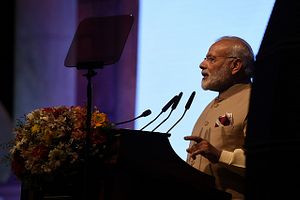This year’s G-20 summit is being held at a time of grave global distress. Multiple faultlines are threatening to derail the global order and there is no leadership around the world that seems capable of rising up to the challenges of our times. U.S. President Donald Trump is busy being Trump, threatening to rip up global frameworks without offering any real alternative. The European Union is coming to terms with own dysfunctionality at a time when it is being challenged from within and without. The United Kingdom is so mired in a political mess of its own making that it is unclear if it can even think of anything beyond the next leadership contests for the post of prime minister. China is facing an economic crisis that even Xi Jinping, with all his centralization of power, is finding it difficult to manage. And Russia has no larger interest than challenging the United States and the West at every possible platform. In more than a few ways, India is well positioned to make its presence felt.
As leaders of the G-20 meet in Osaka, there is a sense of bewilderment about the real aims of this platform and if it has any relevance in this day and age. Today the G-20 faces perhaps its most serious challenges since it first met in November 2008 to tackle the financial crisis, with a primary mandate of preventing future international financial crises. As trade tensions escalate among major powers and global growth decelerates, the G-20 countries will find it hard to present a common framework to tackle global challenges, something the group was able to do after the 2008 financial crisis when it not only consolidated IMF’s budget, but also prevented protectionist tendencies from taking root.
Today the world looks much different. More than anything else, the international community would be watching the meeting between Trump and Xi on the sidelines and attention will focused on whether the U.S. and Chinese leaders can strike a deal to end the ongoing trade war. It seems that Washington and Beijing have decided to resume their talks to resolve the trade dispute. Whatever the outcome, tensions between the United States and China are unlikely to get resolved anytime soon, thanks to the structural shifts shaping the trajectory of this bilateral relationship.
For Trump, trade is going to be a key issue area as he starts his re-election campaign. And not surprisingly, ahead of his meeting with Indian Prime Minister Narendra Modi on the sidelines of the G-20 Summit, Trump decided to lash out at India, suggesting that India’s tariffs on U.S. products were “unacceptable”and they must be withdrawn. This despite the fact that U.S. Secretary of State Mike Pompeo, who was in New Delhi this week, sought to play down trade tension with India by promising a renewed focus on negotiating better ties. Modi’s engagement with Trump would therefore require his diplomatic skills at his best.
The last G-20 summit saw New Delhi participating in two trilaterals – one with Japan and the United States on maritime cooperation and one with Russia and China on trade. It reflected a new confidence on the part of New Delhi to pursue issue based alignments. But as tensions rise between major powers and the Trump administration remains adamant on trade, India’s ability to navigate this tricky terrain will be severely tested.

































